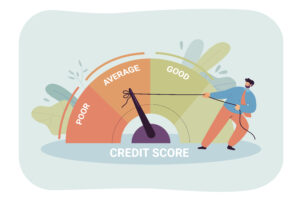Role of Money in Childhood Health Age Up to 05 Years
The Financial Impact on Frequent Illnesses of Kids
Childhood illnesses often present significant challenges to families across the globe, particularly in low-income communities. In rural and semi-urban regions of India and the USA, financial hardships severely impact children’s health, especially those under five years old. This article explores the correlation between frequent illnesses and financial constraints, diving into causes, consequences, and actionable solutions. As we know today we are trying to understand the Role of Money in Childhood Health Age Up to 05 Years. Before that we have to know some common but Important fact about the topic

Table of Contents
The Role of Money in Childhood Health
Money plays an indispensable role in ensuring access to healthcare, nutritious food, and safe living conditions. Without adequate financial resources, families often face:
- Delayed Medical Attention: Inability to afford timely doctor visits.
- Lack of Preventative Care: Missed vaccinations and check-ups.
- Nutritional Deficiencies: Poor diets due to limited food budgets.
These factors contribute to frequent illnesses among children and create a cycle of poor health.
Common Childhood Illnesses in Financially Struggling Families
- Read More About:-Health Problems in Children Up to 5 Years Due to Financial Challenges in Poor Families
Respiratory Infections
Living in inadequate housing, often near industrial zones, exposes children to pollutants, leading to respiratory infections such as pneumonia and bronchitis.
Diarrheal Diseases
Contaminated water and lack of proper sanitation make diarrheal diseases a leading concern, especially during summer months when infections spike.
Seasonal Illnesses
- Flu: Winter flu exacerbated by a lack of warm clothing or preventive vaccinations.
- Gastroenteritis: Caused by improper food storage or unsafe water during hotter months.
Malnutrition-Related Conditions
Financial constraints often lead to stunting, wasting, and anemia among children, hindering their growth and cognitive development.
Understanding the Health and Money Correlation, Role of Money in Childhood Health Age Up to 05 Years

Child Development and Poverty
Children from impoverished families often lag in physical and mental development due to:
- Inadequate Learning Resources: Limited access to books, toys, or preschool education.
- Increased Absenteeism: Frequent illnesses prevent consistent school attendance.
Impact on Mortality Rates
High out-of-pocket expenses often lead to untreated illnesses, increasing mortality rates among children in poor households.
Poverty-Driven Factors Affecting Health
Poor Hygiene and Sanitation
Families lacking proper sanitation are more susceptible to infections such as typhoid and cholera.
Environmental Pollution
Many low-income families live near factories or busy roads, where pollution aggravates conditions like asthma.
Limited Healthcare Access
- In Rural Areas: Lack of hospitals or clinics within reachable distances.
- In Semi-Urban Areas: Overcrowded government hospitals with limited resources.
Case Study: Health Challenges in Rural India
In a remote Indian village, five-year-old Ramesh frequently battled respiratory infections. His parents, earning less than $5 daily, couldn’t afford inhalers or doctor visits. Stories like Ramesh’s highlight how financial hardships amplify the health crisis for children under five.
Financial Barriers to Healthcare
Out-of-Pocket Expenditures
Families in India and the USA alike face high costs for doctor visits, medications, and emergency care, forcing many to delay or skip treatments.
Lack of Health Insurance
Without insurance, low-income families remain unprotected against medical emergencies, leading to compounded financial stress.
- Read About:-How ESIC Helps Poor and Middle Class Families?

Government Initiatives for Improvement
India’s Ayushman Bharat Scheme
Provides free healthcare to families below the poverty line, covering treatments for severe illnesses.
Medicaid in the USA
Assists low-income families with healthcare access, ensuring children receive vaccinations and regular check-ups.
Sustainable Solutions
Investing in Preventative Care
Educating communities about the importance of vaccinations and hygiene can significantly reduce preventable illnesses.
Affordable Healthcare Models
Government and NGOs can work together to create clinics with low-cost services, especially in underserved areas.
Comparison Table: Common Illnesses and Solutions
| Illness | Cause | Solution | Prevention |
|---|---|---|---|
| Pneumonia | Lack of vaccinations | Antibiotics | Regular vaccinations |
| Diarrhea | Contaminated water | Rehydration therapy | Access to clean water |
| Anemia | Nutritional deficiencies | Iron supplements | Balanced diets |
| Malnutrition | Food insecurity | Nutritional aid programs | Food assistance initiatives |
FAQs
Why my kid gets sick so often?
Frequent illnesses in children often stem from poor nutrition, lack of vaccinations, or exposure to unhygienic conditions.
What are the most common illnesses in poor families?
Respiratory infections, diarrhea, and malnutrition-related conditions are the most prevalent.
How does poverty affect child health?
Poverty limits access to healthcare, clean water, and nutritious food, increasing vulnerability to diseases.
What are sustainable solutions for healthcare access?
Community health clinics, government insurance programs, and hygiene education are effective solutions.
How can financial aid improve child health?
Providing subsidies for medical care, food, and education can reduce illness rates and improve child development.
Conclusion
Frequent illnesses in children under five highlight the urgent need to address the relationship between health and financial stability. By prioritizing affordable healthcare, education, and improved living conditions, we can give every child, regardless of their family’s income, a healthier start in life. Finally we can say, the topic of Role of Money in Childhood Health Age Up to 05 Years, would be good. For more insights, visit ourfinocracy.com.
- Read more About:-
- Health Problems in Children Up to 5 Years Due to Financial Challenges in Poor Families
- The Heartbreaking Impact of Poverty on Childhood Immunization in Poor Low and Middle-Class Families
- How ESIC Helps Poor and Middle Class Families?
- Money Saving Tips For Kids Aged-0-5
- The Early Years: Laying the Financial Foundation for a Toddler’s Future, Age up to 05 Years
- Best Saving Plan for Children: Secure Their Future
- Financial Books for Toddlers in USA: Early Money Lessons
- Unlock Financial Fun: Teaching Kids Money Lessons with Toys in USA and India
- Money Literacy for Girls and Maidy in the USA and India: A Path to Empowerment
- Debunking Financial Myths: Money Problems for Transgender Children Aged 0-5
- Sprouting Sprouts: Heartwarming and Fun Money-Saving Tips for Little Investors (Age 0-5)












